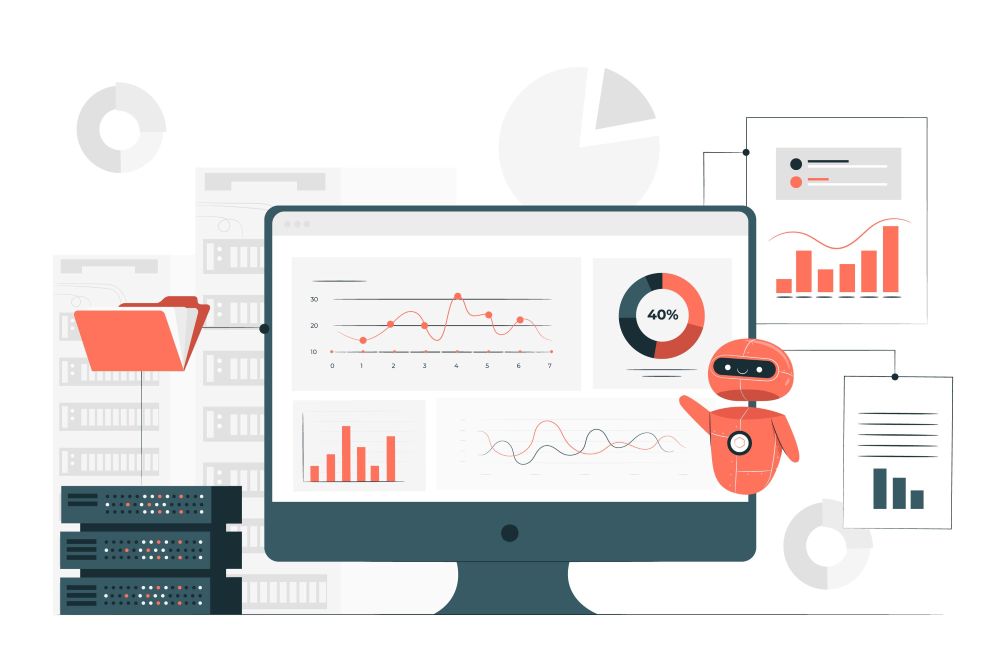Blog
Key Features to Look for in a Modern Payroll Automation System

Introduction
In today’s fast-paced business world, more businesses are turning towards having a modern payroll automation system. Because payroll isn’t just about paying salaries – it’s about maintaining compliance, enhancing employee satisfaction, and delivering operational efficiency. In 2025, with the increasing complexity of tax laws, hybrid workplaces, and employee expectations, relying on outdated payroll processes is risky and inefficient.
With so many solutions available, how do you choose the right one? The key lies in understanding the critical features your business needs to stay competitive, compliant, and future-ready.
In this article, we’ll break down the features of modern payroll automation systems that every growing business should prioritize.
Why Do Businesses Need Payroll Automation in 2025?
Before diving into the features, it’s essential to understand why payroll automation has become a business imperative:
- Hybrid and remote work models make centralized, cloud-based payroll a necessity.
- Frequent tax law updates require systems that automatically adjust deductions and benefits.
- Data security threats demand advanced encryption and access control.
- Employee expectations for real-time access to payslips, leave balances, and tax forms continue to rise.
Investing in a payroll system without essential modern capabilities can lead to compliance issues, employee dissatisfaction, and operational inefficiencies.
Key Features to Look for in a Modern Payroll Automation System
Here’s a comprehensive list of the must-have functionalities every business should seek while selecting a payroll platform in 2025.
1. AI-Powered Tax Compliance and Auto-Updates
One of the most valuable features of modern payroll automation systems is their ability to automatically track and update tax laws, statutory payments, and labor regulations.
AI-powered payroll systems ensure:
- Automatic tax calculations based on region and employee category
- Auto-updates for changes in labor and tax laws
- Error alerts for incorrect tax deductions or payments
This dramatically reduces the risk of penalties and ensures your business remains compliant without manual intervention.

2. Cloud-Based Access for Remote and Hybrid Workforces
With distributed teams now a norm, cloud payroll solutions for remote teams have become indispensable. Cloud-based payroll software allows HR managers, finance teams, and employees to securely access payroll information from anywhere.
Key benefits include:
- Real-time processing and updates
- Data accessibility from any device
- Secure employee self-service portals
- Easier collaboration for multi-location teams
Cloud hosting ensures uninterrupted payroll operations even when teams work remotely.
3. Automated Salary Calculations and Error Detection
Human errors in salary calculations can lead to dissatisfied employees and compliance risks. Modern payroll systems automatically calculate salaries based on:
- Employee grade and CTC
- Leave and attendance records
- Overtime, bonuses, and variable pay
- Tax deductions and benefits
Many advanced platforms also feature AI-driven anomaly detection to flag unusual payouts, duplicate entries, or policy breaches in real time.
4. Employee Self-Service Portals
A standout feature of new-age payroll systems is employee self-service (ESS) portals. These empower employees to independently access:
- Payslips and tax forms
- Salary structures
- Leave balances and attendance records
- Reimbursement claims and approval status
This improves transparency, reduces HR workload, and enhances the overall employee experience.
5. Integration with HR, Accounting, and Attendance Systems
Payroll systems should no longer exist in silos. An efficient modern payroll management system seamlessly integrates with:
- HRMS (for employee data and leave tracking)
- Accounting software (for financial reporting and ledger mapping)
- Attendance and biometric systems (for accurate work-hour calculation)
Such integration eliminates duplicate data entries, improves reporting accuracy, and streamlines processes across departments.
6. End-to-End Data Security and Compliance Controls
Given the sensitive nature of payroll data, modern systems offer advanced security features like:
- End-to-end data encryption
- Role-based access control
- Multi-factor authentication
- GDPR, HIPAA, and local labor law compliance adherence
These controls safeguard employee data and protect businesses from potential legal liabilities.
7. Multi-Location and Multi-Currency Payroll Support
For businesses operating across states or countries, it’s essential to have a system that supports multi-location and multi-currency payroll processing.
Key capabilities include:
- Automatic currency conversion
- Location-specific tax deductions and benefits
- Local statutory compliance handling
- Unified reporting for centralized visibility
This ensures payroll accuracy and legal adherence for globally distributed teams.
8. Customizable Reporting and Analytics Dashboards
A modern payroll automation system should provide comprehensive, customizable reports on:
- Payroll costs by department or region
- Tax liabilities and deductions
- Overtime, bonuses, and reimbursements
- Compliance summaries and audit trails
AI-powered analytics dashboards help HR and finance leaders track trends, forecast costs, and make data-backed decisions.
9. Mobile App Accessibility
As more business functions shift to mobile, payroll management shouldn’t be left behind. Leading payroll solutions offer mobile apps that allow:
- Employees to view payslips and apply for leave
- HR managers to approve payroll processes
- Instant notifications on salary credits and tax filing deadlines
This boosts flexibility and ensures payroll tasks are managed efficiently, even on the go.
10. Automated Statutory Filing and Payment Processing
Modern payroll systems simplify the filing of statutory dues like:
- Income tax
- Provident Fund (PF)
- Employee State Insurance (ESI)
- Professional tax
Auto-generated forms and online payment integrations ensure businesses never miss critical compliance deadlines.
Conclusion
Choosing the right payroll system isn’t just about streamlining payment processes – it’s about ensuring compliance, data security, and employee satisfaction while minimizing operational costs.
In 2025, features of modern payroll automation system like AI-powered compliance, cloud-based operations, integrated modules, and employee self-service portals aren’t optional – they’re essential.
Investing in a future-ready payroll system will help your business stay compliant, agile, and competitive while providing a better experience for your workforce.
If your current payroll process feels outdated or vulnerable, now’s the perfect time for an upgrade. Connect with our HR tech experts to explore the best-fit payroll automation solutions for your business.

